If you’re deciding between Snowblades (short skis) and wide skis, here’s the quick takeaway: Snowblades are all about fun, agility, and ease, while wide skis are built for speed, precision, and deep powder. Your choice comes down to what kind of skier you are and how you want to enjoy the slopes.
- Snowblades (26–47 inches): Perfect for quick turns, tight spaces, and playful skiing. They’re easy to learn, lightweight, and portable - great for beginners or casual skiers. Plus, they work with regular winter boots, saving you money.
- Wide Skis (60–78+ inches): Ideal for high-speed runs, smooth carving, and tackling deep snow. They’re a better fit for experienced skiers who want stability and control on steep or challenging terrain.
Quick Comparison:
| Feature | Snowblades | Wide Skis |
|---|---|---|
| Length | 26–47 inches | 60–78+ inches |
| Maneuverability | Excellent | Moderate |
| Learning Curve | Easy | Steep |
| Portability | Fits in a backpack | Bulky, requires roof racks |
| Terrain | Groomed slopes, parks | Powder, steep runs |
| Cost | Starts at $250 | $800–$1,500+ |
So, if you’re looking for something light, easy, and fun, Snowblades might be your new best friend. But if you’re chasing speed and precision, wide skis are the way to go. Let’s dive into the details to help you decide.
Snowboarder tries Snowfeet* | Which Snowfeet* Short Ski is the Best? | Snowblades 44, 65, 99 Review
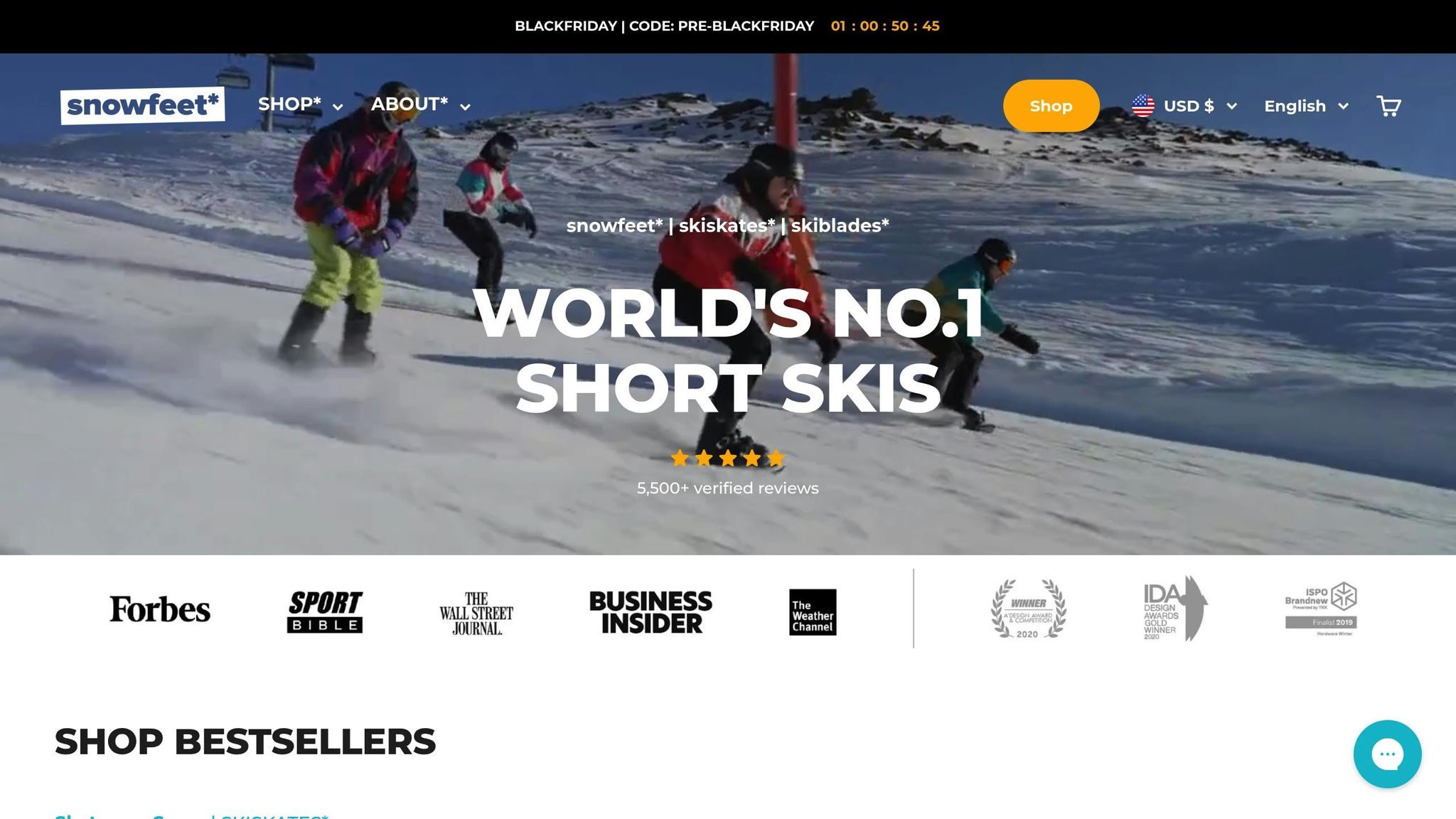
What Makes Snowfeet* Skiblades Different?
Snowfeet* Skiblades aren’t just shorter skis - they offer a whole new way to enjoy winter sports. While traditional ski brands have spent years perfecting longer and wider designs, Snowfeet* took a completely different route. The result? A unique experience that feels more like skating on snow than conventional skiing.
One of their standout features is how effortlessly they respond to even the smallest movements. Unlike traditional wide skis, which require a deliberate shift in body weight to turn, Snowfeet* Skiblades let you change direction with just a slight ankle movement or lean. This distinct style opens the door to a whole new level of agility and fun.
Compact and Lightweight Build
Snowfeet* Skiblades are incredibly compact, measuring only 26 to 47 inches (65–120 cm) - about half the length of standard skis. This makes them super easy to pack in a backpack, toss in your car, or even carry onto a plane. Compare that to traditional skis, which are bulky and often a hassle to transport.
Their lightweight design isn’t just convenient - it also reduces fatigue, so you can enjoy more time on the slopes without wearing yourself out.
Versatile Across Different Terrains
Whether you’re hitting groomed slopes or snowparks, Snowfeet* Skiblades shine with their unmatched agility. They also hold their own in powder, especially models like the 99 cm, 120 cm, and 99 Powder, which are built for deeper snow. While longer skis are ideal for vast mountain runs, Snowfeet* Skiblades are perfect for sliding hills, hiking trails, or even your backyard - assuming you’ve got enough snow.
The shorter models can handle light powder up to 4 inches deep, which covers most skiing conditions in American ski areas. For deeper snow, the longer models perform admirably, as long as the terrain isn’t too steep or heavily ungroomed.
Easy to Learn for Beginners
If you’re new to skiing, Snowfeet* Skiblades are a game-changer. Most beginners can pick them up in a single day, unlike traditional skis that often take weeks to master.
This simplicity comes from their shorter length, which makes them easier to control and less intimidating. With traditional skis, beginners need to juggle weight distribution, edge control, and timing all at once. Snowfeet* Skiblades let you focus on the basics - balance and turning - without feeling overwhelmed.
Another bonus? The adjustable bindings work with regular winter boots or snowboard boots, so you don’t have to invest in pricey ski boots right away. If you’re comfortable with ice skating or rollerblading, you’ll find the movement patterns surprisingly familiar, making the learning curve even shorter.
Plus, Snowfeet* Skiblades naturally improve your balance and coordination. They encourage you to rely on your own stability rather than compensating for the weight of heavy equipment. This not only helps beginners build confidence quickly but also sets the foundation for good skiing habits, turning those first days on the slopes into a genuinely enjoyable experience.
Wide Skis: The Standard Option
Wide skis, typically measuring between 65 to 75 inches with waists over 4 inches, are a popular choice at American resorts. Brands like Rossignol, K2, and Völkl craft these skis for their exceptional stability during high-speed descents and their ability to float through deep powder.
These skis are a go-to for experienced skiers who thrive in challenging mountain conditions. They’re designed with serious performance in mind, making them a staple for those who love the thrill of advanced skiing.
Benefits of Wide Skis
Wide skis excel in deep powder, keeping you effortlessly on top of the snow. They also shine when it comes to high-speed stability and precise control. As the Snowfeet Team puts it:
"Long skis are perfect if you're into advanced skiing techniques like carving, racing, or tackling steep, icy slopes. They handle tough conditions with precise control, favored by experienced skiers." - Snowfeet Team
For those passionate about racing or carving, wide skis deliver the kind of performance that appeals to ski instructors, competitive racers, and anyone who values technical precision. But while they offer plenty of perks, they’re not without their downsides.
Drawbacks Compared to Snowfeet* Skiblades
Despite their strengths, wide skis aren’t always the best fit for everyone, especially casual skiers. Their size can make transport and storage a hassle, and they’re not as nimble when navigating moguls or tight runs. The longer length means turns require more space and effort, making quick directional changes a challenge.
Another consideration is the learning curve. Wide skis demand more skill and practice to master, unlike the Snowfeet* Skiblades, which are designed to be intuitive and user-friendly. For casual outings or a fun day at your local hill, the advanced features of wide skis might feel like overkill. Snowfeet* Skiblades, on the other hand, offer a playful, agile alternative that’s easy to pick up and enjoy right away.
sbb-itb-17ade95
Head-to-Head: Snowfeet* Skiblades vs. Wide Skis
Now that we’ve broken down the key features of both, let’s compare Snowfeet* Skiblades and traditional wide skis side by side. This will help highlight how they differ in the areas that matter most to skiers.
Comparison Table: Features and Performance
| Feature | Snowfeet* Skiblades | Wide Skis |
|---|---|---|
| Length | 25.6–47.2 inches (65–120 cm) | 60–78+ inches (150–200+ cm) |
| Maneuverability | Excellent – quick turns and agile movement | Limited – requires more space for turns |
| Learning Curve | Easy – intuitive for beginners | Steep – demands skill and practice |
| Portability | Lightweight and compact – fits in a backpack | Heavy and bulky – requires roof racks |
| Storage | Minimal space needed | Large storage requirements |
| Terrain Parks | Perfect for tricks and jumps | Challenging to maneuver |
| Crowded Slopes | Easily navigates tight spots | Difficult in congested areas |
| Fun Factor | High – playful and engaging | Moderate – focused on performance |
| Maintenance | Low – simple upkeep | High – regular tuning needed |
These differences make it clear that Snowfeet* Skiblades and wide skis cater to very different skiing styles and preferences. Let’s dive deeper into turning, control, and storage to see how these two options stack up.
Turning and Control
When it comes to turning and control, Snowfeet* Skiblades shine. Their short and compact design allows for quick pivots and sharp turns, making them perfect for weaving through crowded slopes or tackling terrain parks. Unlike wide skis, which demand more room to execute turns, Snowfeet* Skiblades let you change direction almost instantly. Whether you’re navigating moguls or exploring narrow trails, they make control feel effortless.
Wide skis, on the other hand, focus on stability and speed, which can require more effort and skill to master. While they excel on open slopes and powder, they’re less forgiving in tight spaces or when attempting quick maneuvers. Snowfeet* Skiblades, by contrast, prioritize agility and ease of use, making them a playful and approachable choice for skiers of all levels.
Transport and Storage Ease
One of the most practical advantages of Snowfeet* Skiblades is their size. At just 25.6 to 47.2 inches long, they’re significantly shorter than traditional skis, which can easily exceed 78 inches. This compact design doesn’t just make them easier to control - it also makes them a dream to transport. Forget about roof racks or awkwardly carrying heavy gear. Snowfeet* Skiblades can fit in a backpack, making them ideal for spontaneous ski trips or international travel where space is at a premium.
When it’s time to pack up for the season, storage is equally hassle-free. Unlike wide skis that can take up an entire corner of your garage or basement, Snowfeet* Skiblades can be tucked away in a closet, under a bed, or even in your car trunk. For anyone living in a smaller space, like an apartment, this convenience is a game-changer. Plus, their lightweight build means less fatigue on the slopes, so you can enjoy longer days without the strain.
Whether it’s turning, portability, or storage, Snowfeet* Skiblades offer a level of simplicity and ease that’s hard to beat.
Why Snowfeet* Skiblades Are the Better Choice
Snowfeet* Skiblades bring a fresh twist to winter sports, offering a design that’s all about having more fun and freedom on the slopes. Let’s dig into what makes them such a standout option.
Changing Winter Sports for All Skill Levels
Snowfeet* is shaking things up with skiskating, a new winter sport that challenges the idea that longer skis are always better. The company’s message is simple: shorter skis can offer a more enjoyable and versatile experience. And they’re not wrong - these skiblades provide a skating-like feel that’s easy to pick up for beginners and packed with potential for advanced users to try tricks in tight spaces.
What’s even better? They’re not just limited to ski resorts. Snowfeet* Skiblades can handle slopes, parks, hiking trails, and even your backyard. That means you’re not stuck needing a pricey lift ticket to enjoy the snow. Whether you’re a first-timer or a seasoned skier, these skiblades adapt to your style and environment.
Perfect for American Winter Adventures
For Americans with busy lifestyles, Snowfeet* Skiblades are a game-changer. Their compatibility with regular winter shoes means you don’t need to splurge on ski boots, which often cost $300–$800. Of course, if you prefer, snowboard or ski boots work too, but the flexibility to use everyday footwear makes things much easier - and cheaper.
This is especially helpful for families. Instead of buying or renting boots for every family member, you can just use the winter shoes you already have. Think of the savings! That extra cash could go toward a weekend ski trip or other fun activities.
Plus, their compact size solves a problem many Americans face: storage. Traditional skis can take over your garage or basement, but Snowfeet* Skiblades are small enough to fit in a closet or even under a bed. Perfect for apartment dwellers or anyone short on space.
A Budget-Friendly and Low-Maintenance Option
When it comes to costs, Snowfeet* Skiblades make a strong case. A typical ski setup from brands like Rossignol or Salomon can set you back $800–$1,500. In comparison, Snowfeet* offers various models to suit different needs, with prices starting at $250 for Mini Ski Skates (38 cm) and going up to $775 for Short Skis (120 cm).
And let’s talk maintenance. Traditional skis often need professional tuning, edge sharpening, and waxing, which can add $50–$100 annually to your expenses. Snowfeet* Skiblades? They’re low-maintenance. A little basic waxing is all it takes to keep them in top shape, and replacement straps and wax are available for as little as $6.
Durability is another win. Shorter skis like these experience less wear and tear during jumps and landings, so they’re built to last. Unlike traditional skis, which can suffer from edge damage or binding failures, Snowfeet* Skiblades are designed for the playful, trick-filled style of skiing they inspire.
All in all, Snowfeet* Skiblades offer a mix of affordability, durability, and convenience that’s hard to beat. You’ll spend less time worrying about upkeep and more time carving up the snow.
Conclusion: Choose Your Best Slope Equipment
When it comes to picking between Snowfeet* Skiblades and traditional wide skis, it all boils down to what you value most on the slopes: fun, control, and ease of use. Snowfeet* Skiblades check all those boxes in ways that traditional gear just can’t.
They’re a wallet-friendly option that skips the hassle of lugging around long skis, squeezing them into your car, or dealing with the awkwardness on crowded chairlifts. Plus, their lightweight, compact design means less fatigue, so you can stay out on the mountain longer. Unlike wide skis, which often keep you confined to resort runs, Snowfeet* Skiblades open up a world of possibilities - from slopes and parks to hiking trails and even your own backyard.
For beginners or casual skiers, these skiblades are a game-changer. They make learning feel less daunting and more fun, thanks to their quick turns and easy control. Their agility makes them perfect for navigating tight spaces, crowded runs, or even pulling off tricks that would be a challenge with traditional skis. If you’re looking for a mix of versatility, convenience, and pure enjoyment, Snowfeet* Skiblades might be just what you need.
FAQs
How do Snowfeet Skiblades compare to traditional wide skis in terms of performance on the slopes?
Snowfeet Skiblades are all about having a blast on the slopes. Their lightweight design and compact size make them super easy to control, perfect for quick turns and playful maneuvers. Whether you're a beginner finding your groove or just want a more agile ride, these skiblades deliver. They work well on a variety of terrains, too - think groomed runs or narrow trails. Plus, their smaller size means less strain on your legs, so you can keep the fun going longer.
Now, traditional wide skis? They’re built for something different. They shine when it comes to stability at high speeds and handling deep powder, making them a solid pick for advanced skiers or those tackling tougher conditions. But if you're after something portable, beginner-friendly, and just plain fun, Snowfeet Skiblades are the way to go for most recreational skiers.
Are Snowfeet Skiblades easier to learn on compared to traditional wide skis, especially for beginners?
Snowfeet Skiblades are a fantastic option for beginners because they’re much easier to handle than traditional skis. Their smaller size makes turning and controlling your movements feel way more natural, which is perfect for building confidence when you’re just starting out. Unlike long, wide skis that can feel overwhelming, these skiblades simplify the learning process, making skiing less intimidating and way more fun right from the start.
On top of that, their lightweight, compact design makes them super easy to carry around and store - no more wrestling with bulky equipment. Whether you’re hitting the slopes for the first time or just want a fun, versatile way to enjoy the snow, Snowfeet Skiblades make skiing a breeze.
Why are Snowfeet Skiblades a better choice than wide skis for casual skiers or those with limited storage space?
Snowfeet Skiblades are a fantastic option for casual skiers or anyone tight on storage space. Thanks to their compact size and lightweight design, they’re super easy to transport - toss them in your backpack, and you’re good to go. Say goodbye to hauling around bulky gear or stressing about where to store it.
But it’s not just about convenience. These skiblades offer incredible control and agility on the slopes. Their shorter length makes them easier to handle, making them a great choice for beginners or anyone who wants a fun, playful ride. Whether you’re weaving through tight turns or cruising for a laid-back day on the mountain, Snowfeet Skiblades provide a smooth and enjoyable experience. They’re also versatile enough to handle different terrains, giving you a solid alternative to traditional skis.





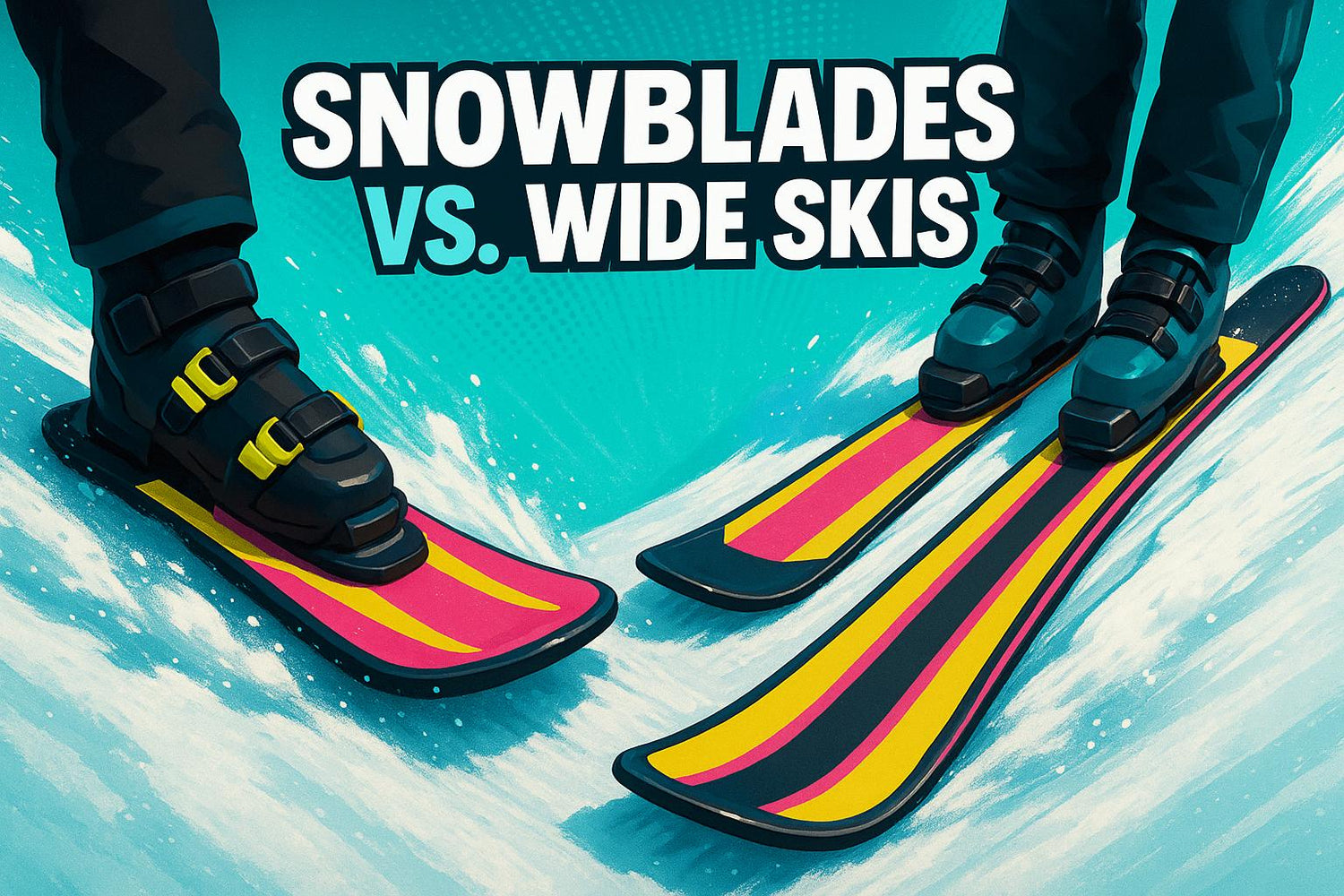

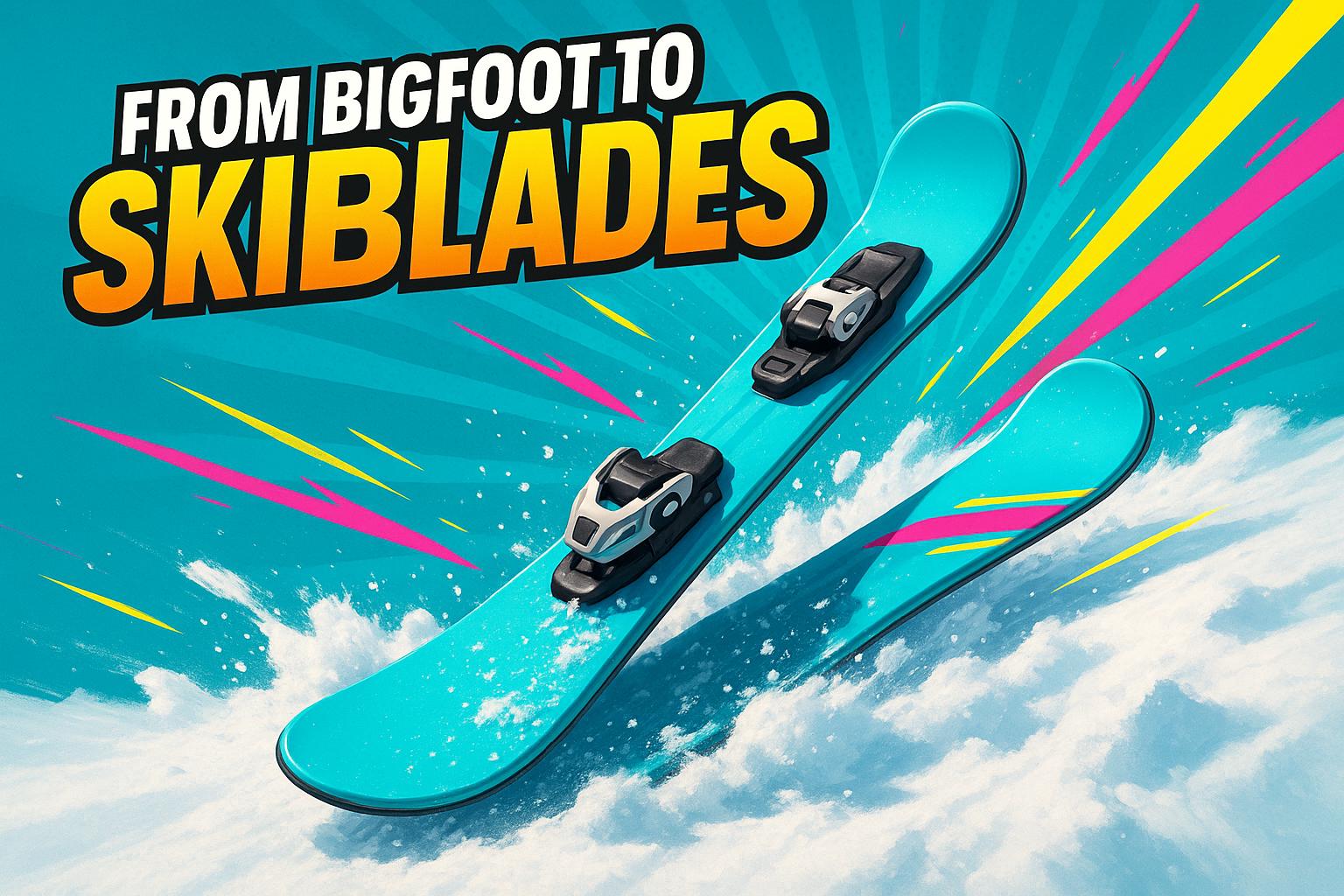




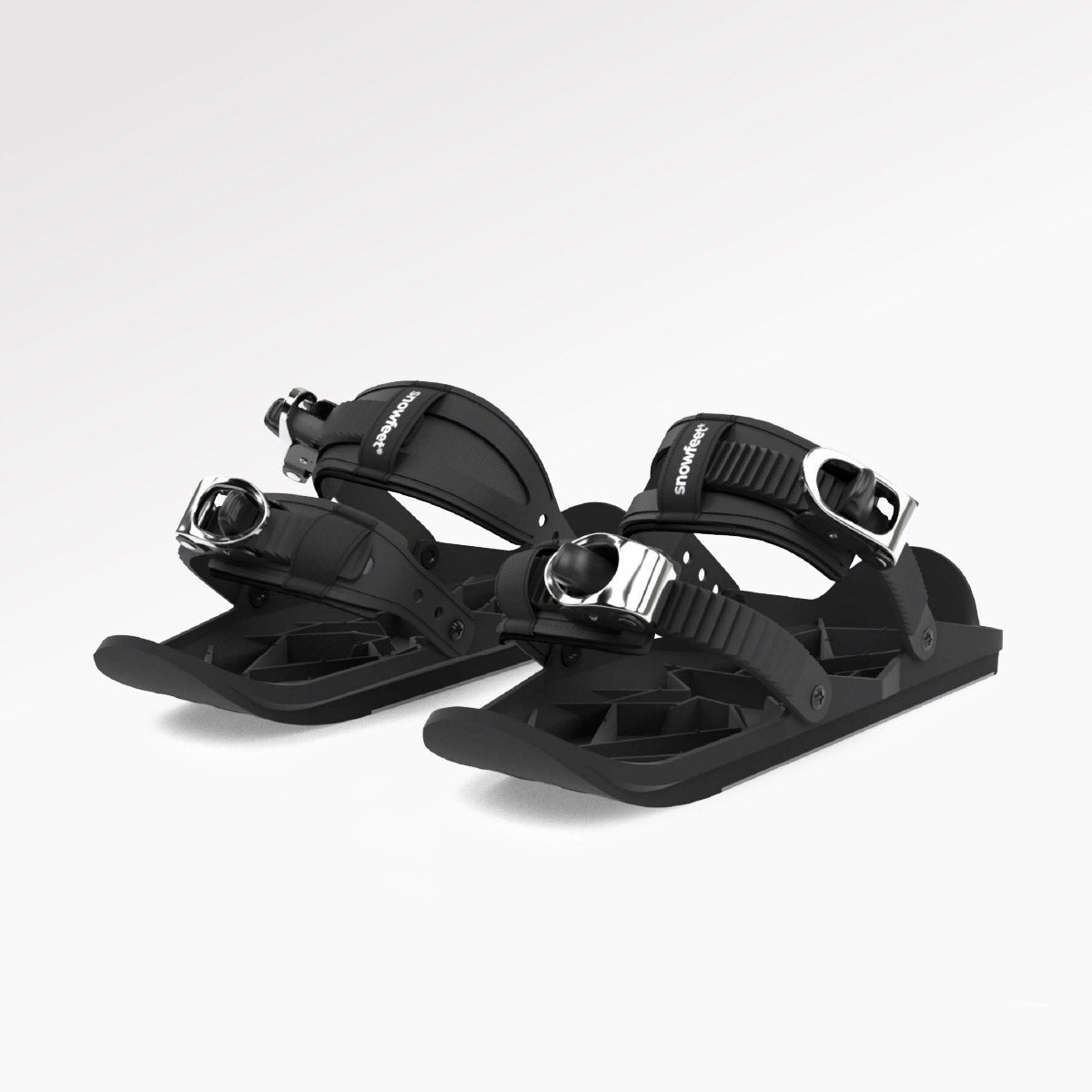
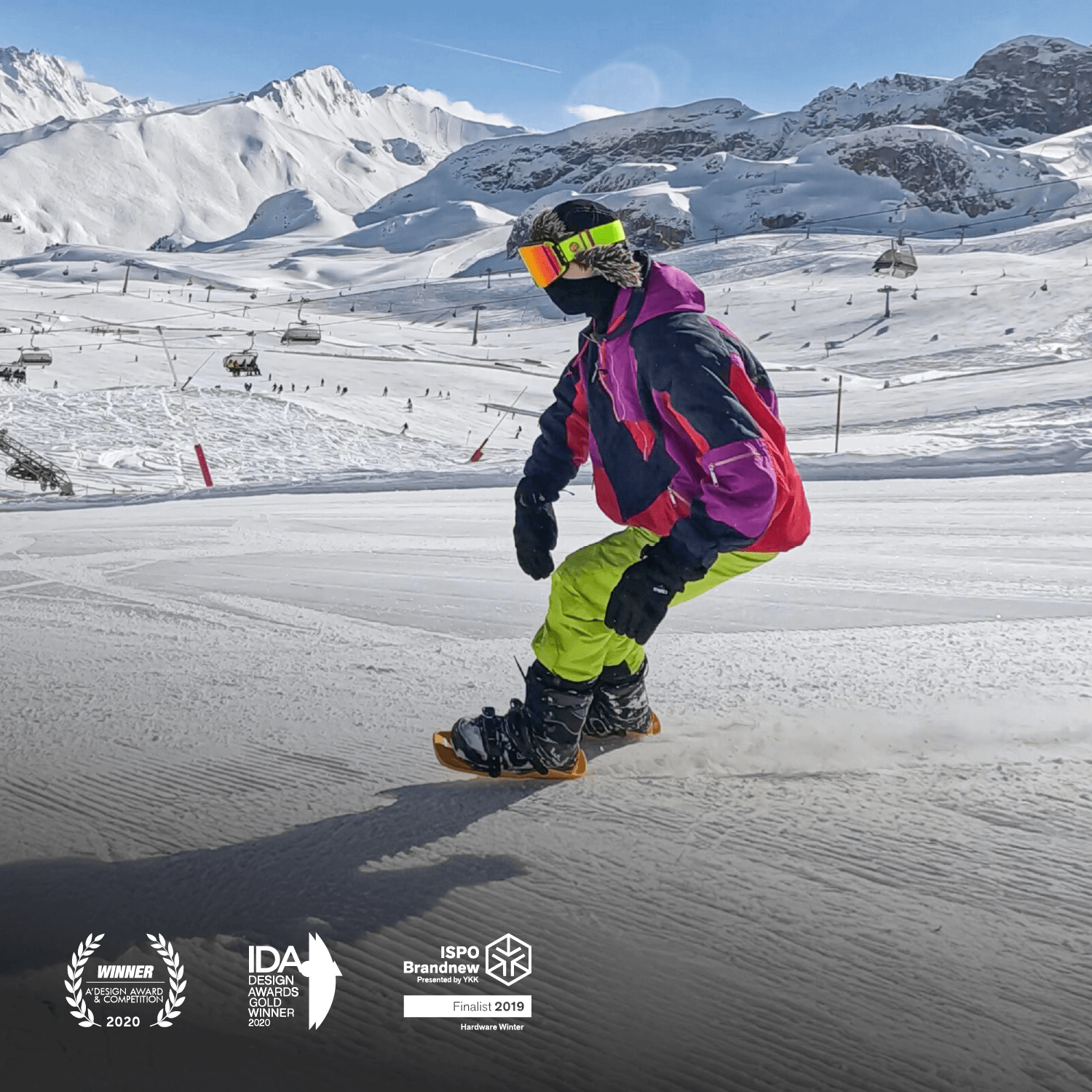


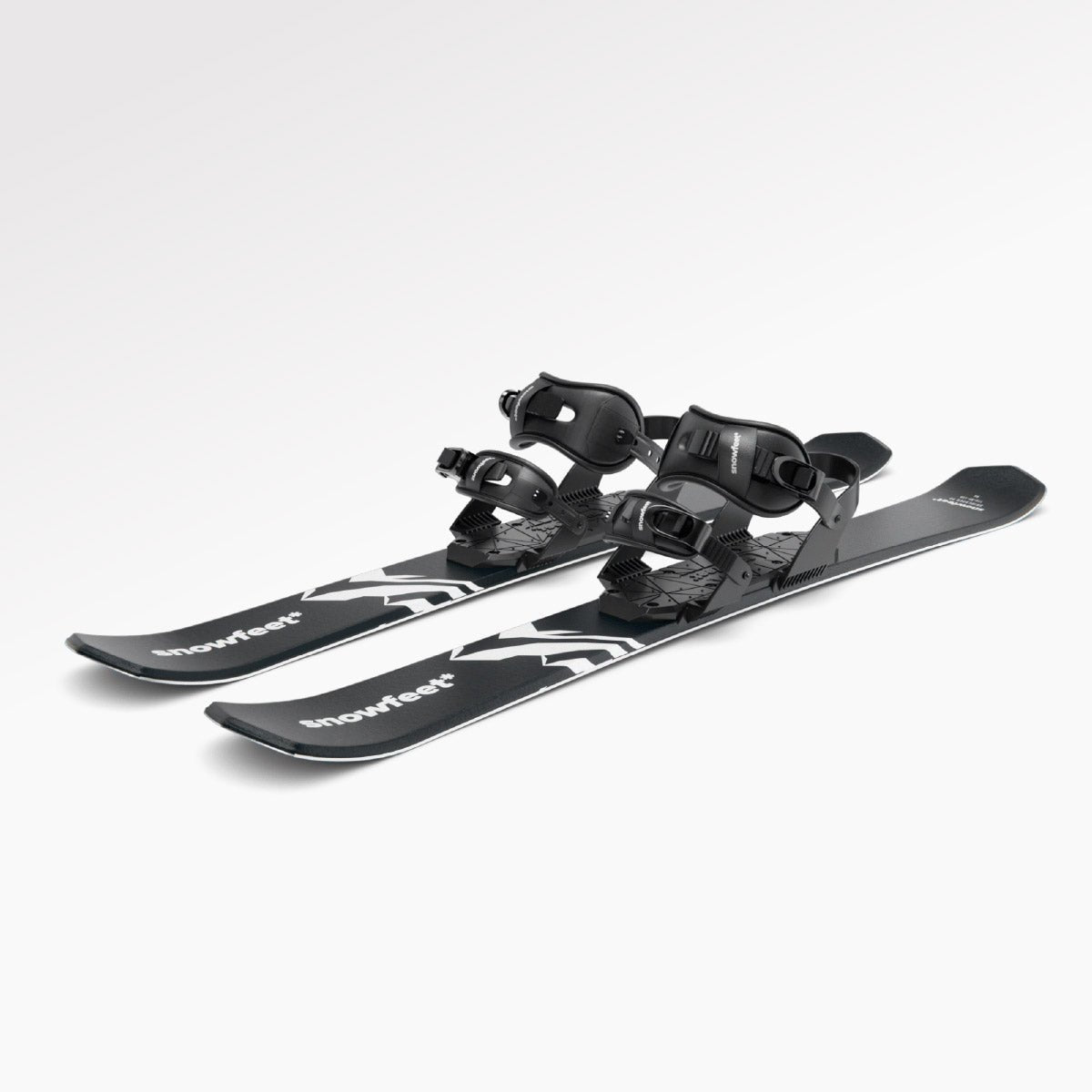

Laisser un commentaire
Ce site est protégé par hCaptcha, et la Politique de confidentialité et les Conditions de service de hCaptcha s’appliquent.